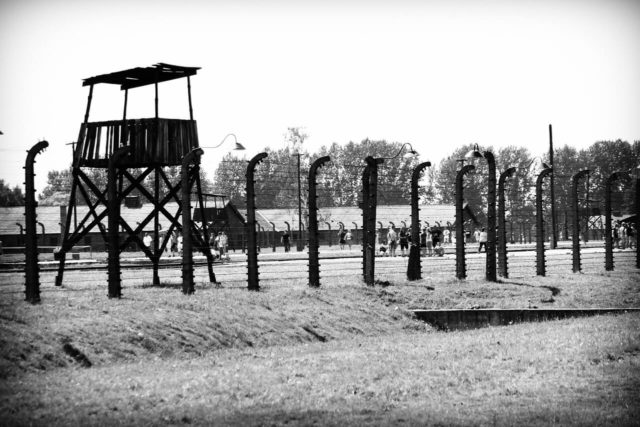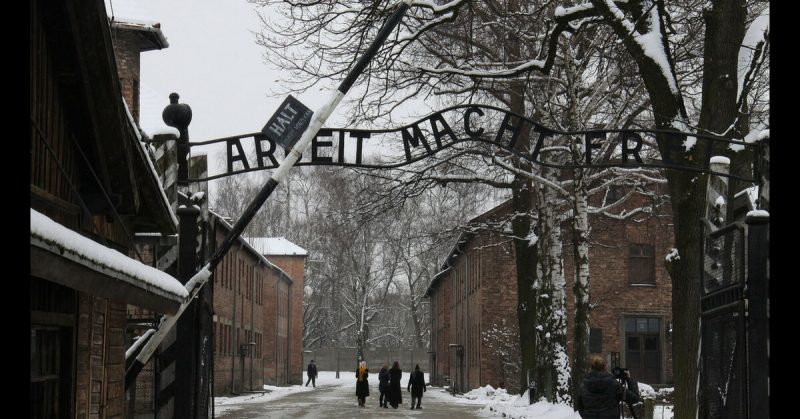In 1944, Sonderkommando Marcel Nadjari kept records of his activities in Auschwitz-Birkenau, including a remarkably accurate number of those killed in the gas chambers. He placed his notes in a thermos and buried them near the crematorium. Thirty-six years later, those notes were found. Unfortunately, water had gotten into the thermos and faded the ink on the paper. The notes were 90% illegible.
Pavel Polian, a Russian historian, received a scan of the notes from the Auschwitz Museum archive. He discussed the poor condition of Nadjari’s notes on the radio in Russia. Afterwards, an IT expert in Russia named Alexander Nikityaev contacted Polian and offered to use his computer expertise to help decipher the notes.
After experimenting with Adobe Photoshop for a year, Nikityaev was able to use the red, green and blue filters in the software to gain 90% legibility of the notes. The red filter is said to have been the most effective of the three. Police departments and secret services have multispectral analysis techniques that are even more effective.
Once Polian had legible text to work with, he turned to Ioannis Carras. Carras is a Greek-British scholar who lives in Germany. Carras was able to translate the text from Greek into English. Polian calls the notes important as there is little direct testimony about the conditions in the concentration camps and the treatment of those interned there.
Polian’s findings were published in the Institute of Contemporary History in Munich. Polian is currently working on updating his book, Scrolls from the Ashes, a book in Russian about the Sonderkommandos.
In 1944, Marcel Nadjari was 26 years old. He was a Greek Jew who was imprisoned in Auschwitz and was forced to work as part of the Sonderkommando, the Jews who were forced to assist with the gas chambers.

Nadjari had heard from fellow Greek Jews that his mother, father, and sister had all been killed at Auschwitz-Birkenau in southern Poland. He considered joining his fellow inmates in the gas chambers to end it all, but the desire for revenge drove him to continue living.Nadjari left thirteen pages of notes in the thermos. The thermos was placed in a leather pouch before being buried near Crematorium III in Auschwitz. It lay buried for thirty-six years before a forestry student from Poland uncovered it.
In the notes, Nadjari describes the crematorium with its fifteen ovens. Near the crematorium was a garden and under the garden were two cellars. In one of the underground rooms, victims removed their clothes. Then they were packed into the other room, the doors were locked and poisonous gas was released. It took six to seven minutes for the victims to die.
After half an hour, Nadjari and the other Sonderkommandos removed the bodies to an elevator which delivered the dead to the ovens.
Nadjari even noted that the ashes of a human weigh approximately 1.4 pounds. His notes included an introduction in German, Polish and French. He requested that anyone who found his notes should take them to his friend Dimitrios Stefannides at the Greek Embassy.Nadjari survived the concentration camp. After the war, he married and had a son and a daughter who he named after his sister who died in the Holocaust. He and his family lived in New York where Nadjari worked as a tailor.
There are similar records from four other Sonderkommandos. Those are in better condition and mostly written in Yiddish. The most important of these notes are the ones from Salmen Gradowski.
Around 110 Sonderkommandos survived Auschwitz. Most were anxious to forget the things they had seen during the war and so they did not discuss it with anyone.
